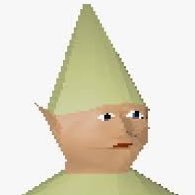
Helsinki Urban Rat Proj @helsinkirats.bsky.social
@helsinkirats
Multidisciplinary research on rats. Where they are? What do they do? How do people feel about them? We are figuring out! @aivelo tweeting.
More active at Bsky!
ID: 948167791940599808
https://www.helsinki.fi/en/projects/urban-rats 02-01-2018 12:23:12
1,1K Tweet
805 Followers
120 Following

Had an absolute blast working with Claudia Hirtenfelder to create a series of episodes. Still can't believe that I went from being a fan of The Animal Turn to contributor. I will be shamelessly spamming your feeds every week so do give it a listen! Won't be a waste of your time 🗑️



As a peculiarity, Helsinki Urban Rat Proj @helsinkirats.bsky.social made a decision in principle of not killing rats, so we used rat carcasses that we got from stakeholders, such as pest management companies, allotment garden associations and a trash incineration plant. (3/4)


Our new issue is out 👉🏽 bit.ly/EUS2940 Featuring a rapid communication from 🇪🇸 providing further evidence on effectiveness of #influenza #vaccination in young children to prevent both influenza infection & #hospitalisation #VaccinesWork #PublicHealth Tuomas Aivelo @aivelo.bsky.social


Rotissa on Helsingissä vähemmän taudinaiheuttajia kuin muualla Euroopassa, kertoo Helsingin yliopiston tutkimus 🐀 Tuomas Aivelo @aivelo.bsky.social Helsinki Urban Rat Proj @helsinkirats.bsky.social hs.fi/tiede/art-2000…

🚨 New paper klaxon! My paper on the link between observer quality and attitudes and other background variables Helsinki Urban Rat Proj @helsinkirats.bsky.social out today at Ecology and Evolution: doi.org/10.1002/ece3.7… A short thread:






Now out in npj Biodiversity: Multispecies relations shape bird-feeding practices Link: doi.org/10.1038/s44185… From the bird-feeding section of Helsinki Urban Rat Proj @helsinkirats.bsky.social A short thread: 1/8













